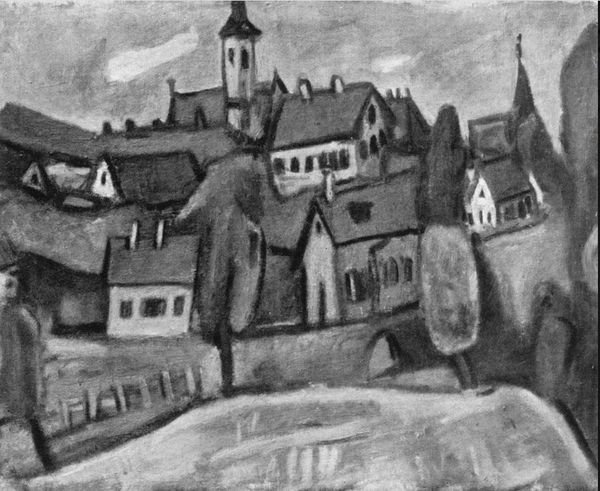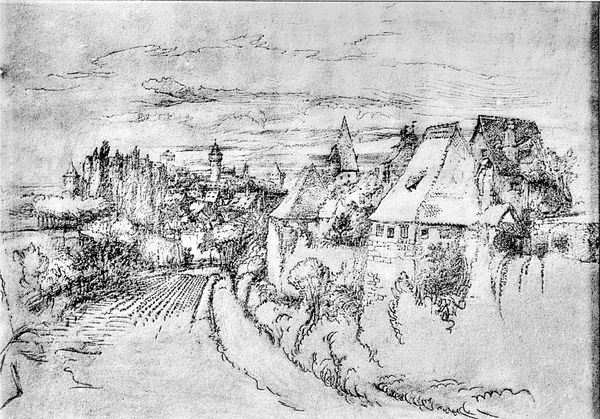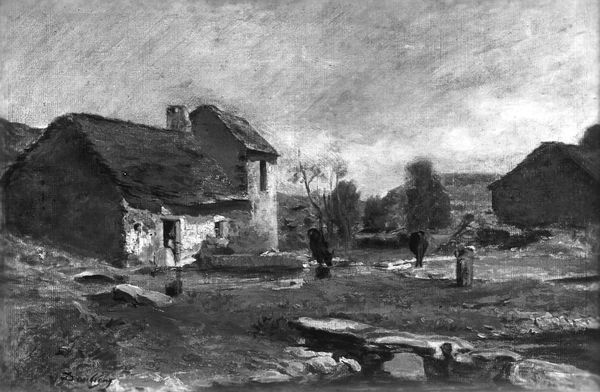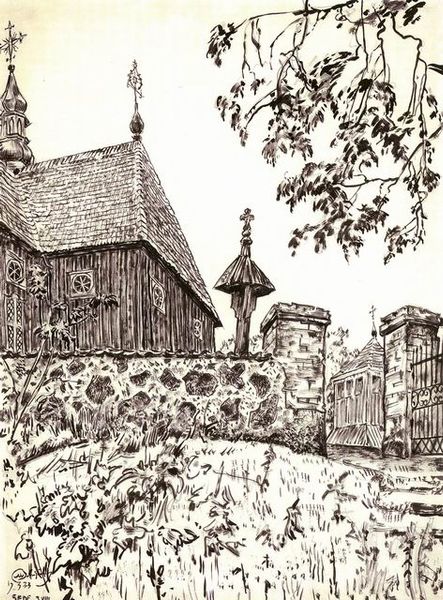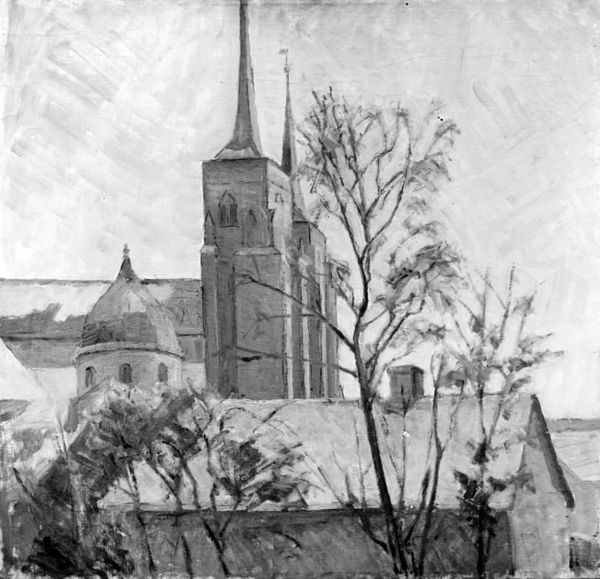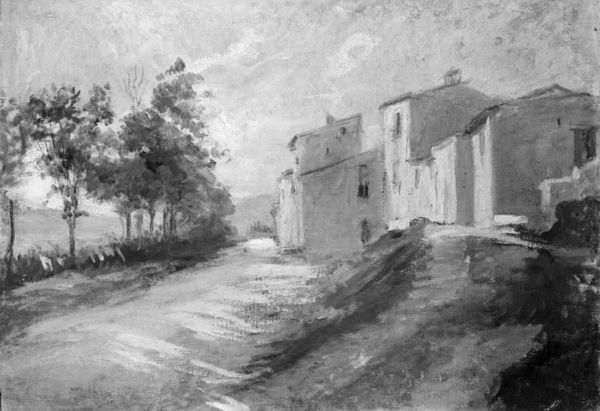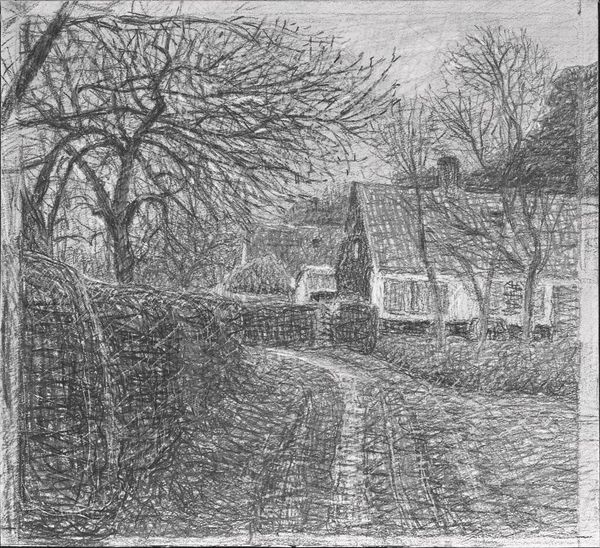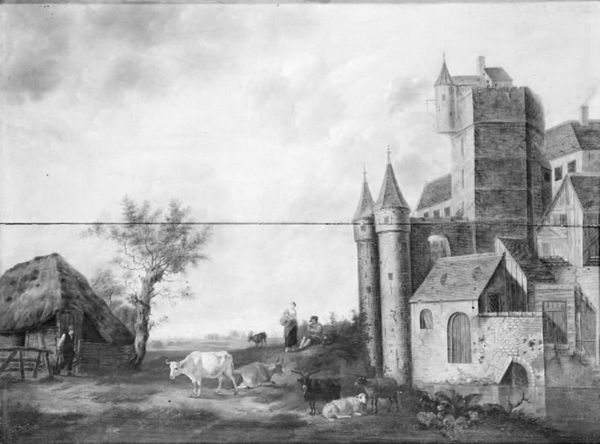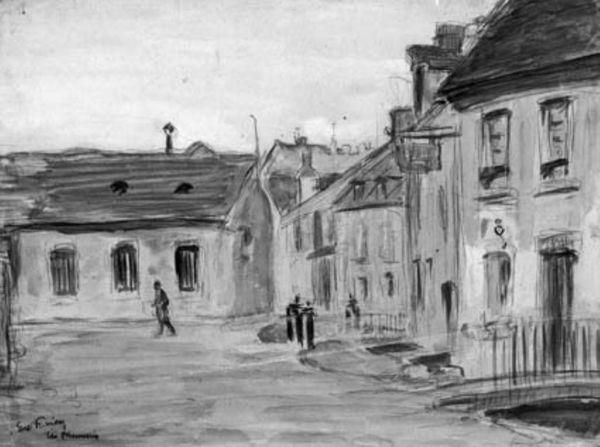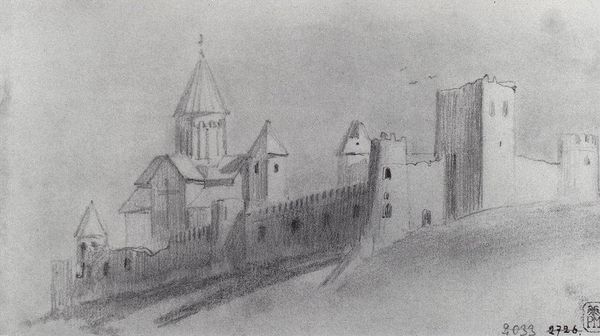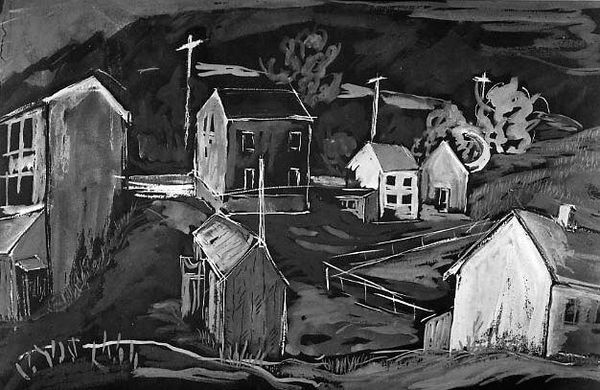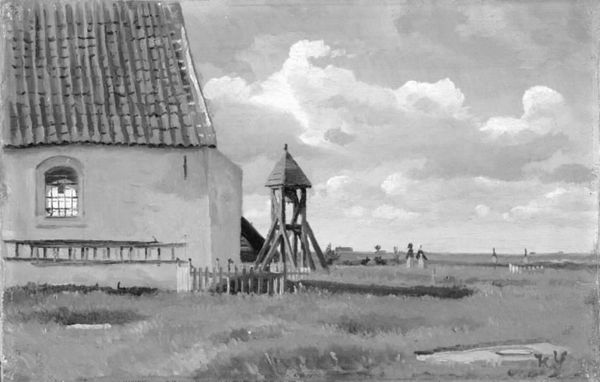
Dimensions: 33.5 cm (height) x 49.5 cm (width) (Netto)
Editor: This is Albert Gottschalk’s "Gade i Stege," painted in 1903. The impasto application of oil paint really gives this cityscape a feeling of gritty realism, even though it's in monochrome. I'm curious, what strikes you when you look at it? Curator: What immediately jumps out is how Gottschalk uses a seemingly neutral cityscape to convey deeper societal meanings. A church steeple, houses huddled together… it subtly highlights the role of institutions and community in early 20th-century Danish life. Do you notice how the street almost funnels our gaze toward that central steeple? Editor: I do. It’s almost like the church is passively watching. But does it give commentary on its social environment? Curator: I think so. Consider the period: shifts in power, nascent urbanisation. The painting subtly suggests a dialogue between traditional structures and evolving society. The choice of this view, a common street made monumental, emphasizes how everyday life becomes part of the grand narrative. Editor: So the location and composition are loaded, but isn’t that true for any cityscape, whether on purpose or accidentally? What do you think Gottschalk was trying to get the audience to *do*? Curator: Good question! Perhaps he’s nudging us to consider the undercurrents shaping our world. Street scenes in art became potent tools for depicting social change. "Gade i Stege" then transcends being a simple landscape; it transforms into a public declaration about the shared human experience and its direction. Editor: It is fascinating to consider how such a seemingly quiet street can speak volumes about society. Thanks for opening my eyes to the history layered within the brushstrokes! Curator: And thank you for bringing fresh perspective. Looking at art with an awareness of historical context deepens the conversation for all.
Comments
No comments
Be the first to comment and join the conversation on the ultimate creative platform.
